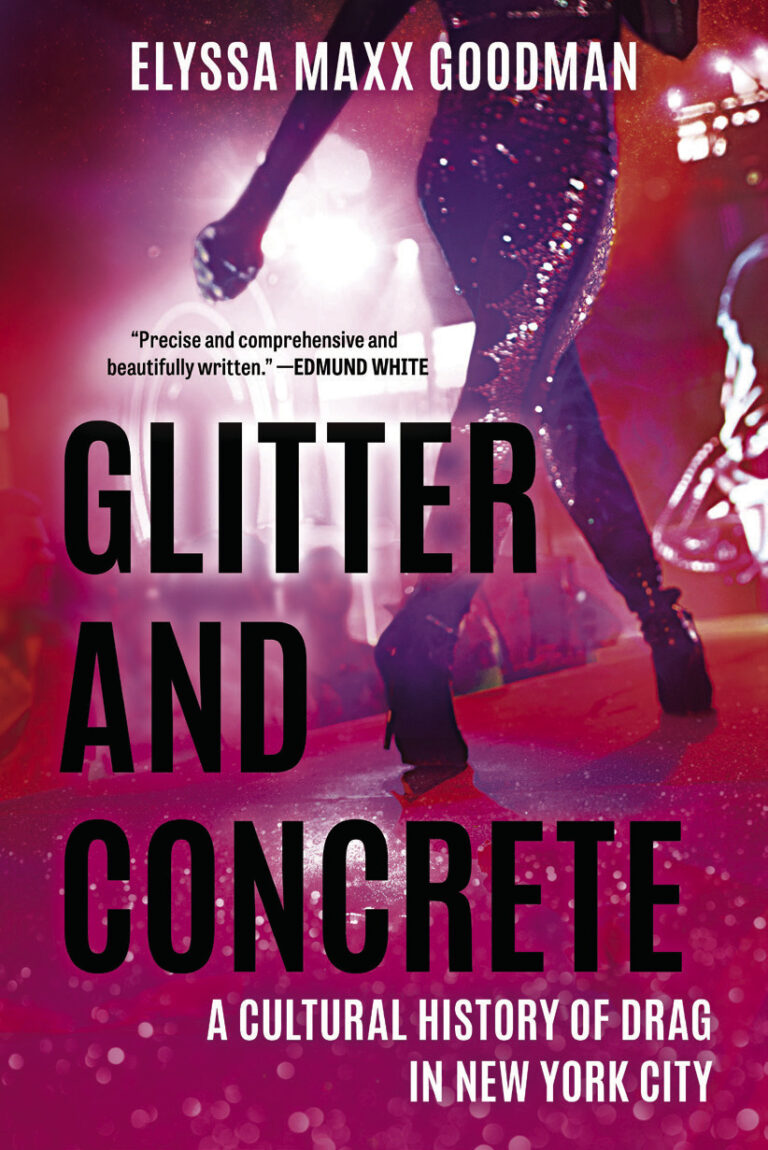“Glitter and Concrete: A Cultural History of Drag in New York City” By Elyssa Maxx Goodman
You simply have nothing to wear. Old joke, that one. Really old because these days, it’s easy for anyone to have racks and shelves and dresser drawers full of casual wear, fancy duds, comfy things and finery to put on their body. Yes, you have plenty to wear but, as in the new book “Glitter and Concrete” by Elyssa Maxx Goodman, you just have to look in the closet.
Like nearly every kid in America, Elyssa Maxx Goodman loved to play dress up. In her case, though, she didn’t hope for a princess costume. She wanted to dress like the characters in To Wong Foo, Thanks for Everything! Julie Newmar. Later, as an adult, she “sought to learn as much about drag as” possible and she began to see New York City as its epicenter.
“From the mid-1800s to 1900, gender impersonation became a beloved genre of theater” in New York, she says, but social attitudes and morals changed in the early 20th century. Female drag performers were often scrutinized, and worked under sometimes-unpredictable rules while male impersonators might have enjoyed the ability to live as a man, travel alone and keep company with women in public.
By the beginning of World War I, social reformers had begun to shut down places where they thought homosexuality might be found, and that included drag venues. They did so, despite that gender impersonations were important to the morale of soldiers.
Says Goodman, “… female impersonator roles were incredibly popular with enlisted men” and one drag show became “an instant hit.”
Prohibition sent both booze and drag underground, but while the former was widely available again in 1933, the latter was not. And yet, it was impossible to keep drag performances from happening; in fact, the mob ran several drag clubs, including one owned by Anna Genovese, the bisexual wife of mobster Vito. Yes, drag could be found in the years 1933 to 1968, but audiences both straight and gay had to search for it.
Still, change was coming …
Then again, doesn’t it seem like change never stopped happening in the world of drag? Like, a now-you-see-it, oops, now-you-can’t kinda thing? Understanding that, and the future of drag, entails knowing its history and that’s easy to do, once you’ve read “Glitter and Concrete.”
In taking readers back some 170 years, author Elyssa Maxx Goodman shows how New York City led the way for drag to be both condemned and enjoyed in the rest of America, often seemingly in the same breath. Intuiting the difference between illegal and permissible was a matter of splitting hairs then; the scandalous nature of drag was often you-know-it-whenyou- see-it, and not always firmly defined. That repeating juxtaposition, a social flip-flop-flip, if you will, is fascinating to follow here. Indeed, it was sometimes a case of one man’s trash being another man’s pleasure.
So what’s changed about that? So much and not much, and the rest of the story is inside this necessary book. Read it, and “Glitter and Concrete” will make you wear a smile.



